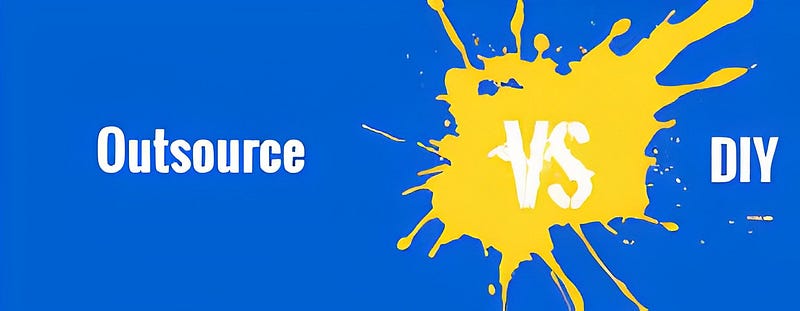Enterprise Data Catalog(EDC): The Power of Organized Data
- Ndz Anthony
- April 27, 2023

Data has become the backbone of modern businesses. We’re living in a world where data-driven decisions are no longer a luxury, but a necessity.
As the saying goes, “Data is the new oil,” and those who can extract, refine, and utilize it most efficiently are the ones who’ll come out on top.
From optimizing processes to discovering new revenue streams, data provides invaluable insights that can give a company that much-needed competitive edge.
But let’s not sugarcoat things — handling massive amounts of data can be quite the challenge. I mean, it’s like trying to find a needle in a haystack.
The more data we accumulate, the more difficult it becomes to sift through and find what we actually need.
Plus, with data stored in different formats, scattered across multiple systems, and governed by various regulations, it’s enough to give even the most seasoned IT professional a headache.
So, what’s the solution to this data management conundrum? Enter the enterprise data catalog (EDC).
It’s like having your own personal data GPS, helping you navigate the complex labyrinth of enterprise data.
In this blog, we’ll dive into the nitty-gritty of EDCs, discuss their benefits, and share some tips on how to implement one in your organization.
What is an Enterprise Data Catalog (EDC)?
So, what exactly is an Enterprise Data Catalog? As someone who’s worked with data for years, I can tell you it’s like a treasure map for your data assets. In a nutshell, an EDC is a centralized, searchable repository that contains metadata about all your data sources.

It’s designed to help you easily discover, understand, and use your data more effectively.
Here are the key components of an EDC that make it such a powerful tool:
- Metadata repository: This is the heart of the EDC, where all the metadata about your data assets is stored. It’s like a library of information, containing details like data source locations, schemas, table structures, data types, and more.
- Data lineage: An EDC doesn’t just tell you what data you have; it also shows you where it came from and how it’s been transformed along the way. This lineage information helps you trace the data’s journey and better understand its context and reliability.
- Data cataloging: EDCs use automated processes and AI-powered techniques to scan and index your data sources. This makes it easy to find, access, and understand your data, without having to manually dig through mountains of information.
- Data governance and security: EDCs play a crucial role in enforcing data policies, ensuring compliance with regulations, and maintaining data privacy. By centralizing metadata and providing a clear view of data usage, EDCs make it easier to manage and monitor data governance.
How EDC differs from traditional data management systems

Now, you might be thinking, “I’ve got a data warehouse or a data lake. Isn’t that enough?” Well, not quite. While data warehouses and data lakes do a great job of storing and processing data, they don’t necessarily make it easy to find, understand, and use that data. That’s where an EDC comes in.
Unlike traditional data management systems, EDCs focus on the metadata, providing a comprehensive view of all your data assets, regardless of where they’re stored or what format they’re in.
By offering advanced search capabilities, data lineage tracking, and integration with various data sources, EDCs empower users across the organization to quickly locate and utilize the data they need.
The Benefits of Implementing an EDC

- Improved data discovery and accessibility
Picture yourself as an intrepid data explorer, sifting through mountains of information to find that one golden nugget of insight. It’s a daunting task, right?
An EDC is like your data sherpa, guiding you through the data wilderness.
Wakefield Research and Elastic found that more than half of all working professionals waste time on non-productive activities like hunting for files. It’s a major issue.
Data catalogue technology helps increase data readiness by providing transparent, searchable, high-quality data. Just imagine all the extra time you’ll have to focus on more important tasks!
- Enhanced collaboration among teams
Think of all the times you’ve been caught in a data tug-of-war, with different departments hoarding their own data sets like squirrels hiding nuts. An EDC is like a data peace treaty, breaking down barriers and fostering collaboration.
In fact, a Gartner study found that organizations with EDCs experienced a 53% increase in cross-functional collaboration. Who wouldn’t want to be part of that data-driven dream team?
- Streamlined data governance and compliance
Data security and compliance might seem as complicated as trying to solve a Rubik’s Cube blindfolded, but an EDC simplifies things.
With an EDC, you can navigate the ever-changing landscape of data regulations, knowing your data is compliant, secure, and accurate.
- Faster and better-informed decision-making
At the end of the day, an EDC is all about empowering you to make smarter, data-driven decisions — and do it faster.
In a world where every second counts, an EDC unlocks the full potential of your data.
The Nuts and Bolts: Building an EDC
Alright, it’s decision time! If you’re thinking about adopting an EDC, there are a few key factors you’ll want to mull over. It’s kind of like shopping for a new car — you’ve got to think about your needs, your budget, and what features matter most to you. So, let’s break down the top things to consider:

- Compatibility: Just like finding the perfect dance partner, you’ll want an EDC that plays nicely with your existing data infrastructure. Keep an eye out for solutions that support seamless integration with your current systems and data sources.
- Scalability: Remember the story of the little engine that cooled? Your EDC should be like that — able to grow and adapt as your data needs evolve. Look for a solution that can handle your current data load and expand to meet future demands.
- Usability: Let’s be real, nobody wants to use a tool that’s more complicated than solving a Sudoku puzzle. A user-friendly EDC with an intuitive interface will make it easy for your team to adopt and embrace the power of organized data.
Integration with existing data infrastructure
So, you’ve found an EDC that checks all the boxes — congrats! But before you pop the champagne, there’s the small matter of integrating it with your current data infrastructure. It’s kind of like moving into a new house — you want to make sure all your furniture fits and everything’s in its place.

- Data source connectors: Look for an EDC with a wide range of pre-built connectors for your existing data sources. This will make it easy to plug and play, without having to spend hours on custom integrations.
- API support: Make sure your EDC has robust API support, so you can easily integrate it with your other data tools and applications. It’s like having a universal remote control for all your data systems!
The role of AI and machine learning in EDC systems
Okay, now for the really cool part: AI and machine learning! These cutting-edge technologies are like the secret sauce that makes EDCs even more powerful and efficient. Here’s how they work their magic:

- Automated data cataloging: AI can help automate the process of scanning and indexing your data sources, making it faster and more accurate.
- Smart recommendations: Machine learning algorithms can analyze your data usage patterns and provide personalized recommendations for relevant data sets. It’s like having a data matchmaker, helping you find the perfect data partner for your project!
Must-Have EDC Features to Boost Your Data Game

We’ve covered some of the things to consider when implementing an EDC, let’s dive into the key features you should look for when choosing the perfect EDC solution to level up your data game.
- Metadata management and data lineage
When choosing an EDC, you’ll want a solution that’s a metadata management powerhouse. It should be able to automatically collect, store, and analyze metadata from various sources, making it easy for you to search and access the information you need. Data lineage is another essential feature, allowing you to track the flow and transformation of your data from its origin to its final destination. This will help you ensure data accuracy, trustworthiness, and compliance.
- Customizable data classification and tagging
One size doesn’t fit all when it comes to organizing your data. That’s why you should look for an EDC that allows you to create custom classifications and tags for your data assets. This will enable you to organize and categorize data in a way that makes sense for your specific organization, making it much easier for users to find and understand the data they need.
- Built-in data quality monitoring
Garbage in, garbage out — if your data is riddled with errors and inconsistencies, it’s going to lead to poor decision-making. To avoid this, choose an EDC that comes with built-in data quality monitoring features. This will help you identify and address data quality issues proactively, ensuring your data remains accurate, complete, and reliable.
The Human Touch: The Role of Data Stewards in EDCs

While EDCs are powerful tools, they still require a human touch to reach their full potential. That’s where data stewards come in. These individuals play a crucial role in managing and maintaining your EDC, ensuring data remains accurate, accessible, and secure.
Data stewardship is the practice of managing and overseeing an organization’s data assets to ensure they’re used responsibly, effectively, and in compliance with policies and regulations.
Data stewards are responsible for maintaining data quality, handling data governance tasks, and serving as the go-to experts on data-related matters. For a deeper dive into data stewardship, you can check out this informative article from DATAVERSITY: Fundamentals of data stewardship.
What are the responsibilities of data stewards in EDC management?
Data stewards play a vital role in EDC management, with responsibilities such as:
- Metadata management: Data stewards ensure that metadata is accurate, up-to-date, and properly documented, making it easier for users to find and understand data.
- Data quality monitoring: They’re responsible for identifying and addressing data quality issues, helping to maintain the accuracy and reliability of your data assets.
- Data governance: Data stewards assist in enforcing data policies and ensuring compliance with regulations, reducing risks associated with data misuse and breaches.
- User support: As data experts, data stewards assist users in navigating the EDC, answering questions, and providing guidance on using data effectively.
Fostering a culture of data stewardship in your organization
To create a successful data stewardship culture, consider the following steps:
- Appoint dedicated data stewards: Select individuals with a strong understanding of data management and domain knowledge to serve as data stewards.
- Provide ongoing training: Offer regular training and resources to help data stewards stay current with best practices, tools, and technologies.
- Encourage collaboration: Facilitate communication between data stewards and other team members, promoting knowledge sharing and collaboration.
- Recognize and reward success: Acknowledge the efforts and accomplishments of your data stewards, reinforcing the importance of data stewardship within your organization.
DIY vs. Outsourcing: Choosing the Right EDC Approach

When it comes to implementing an EDC, you have two main options: building it in-house or outsourcing the task to a third-party vendor. Each approach has its advantages and challenges, so it’s important to carefully weigh your options.
The pros and cons of building an EDC in-house
- Pros:
- Customization: Building an EDC in-house allows for greater customization, ensuring it’s tailored to your organization’s unique needs.
- Control: You’ll have full control over the development and maintenance of your EDC, allowing you to make changes and updates as needed.
- Integration: In-house development can make it easier to integrate your EDC with existing systems and processes.
2. Cons:
- Time and resources: Developing an EDC in-house requires a significant investment of time, money, and personnel.
- Limited expertise: Your in-house team may lack the specialized knowledge and experience needed to build and maintain a robust EDC.
For more insights on building an EDC in-house, check out this article from Data Galaxy
The benefits and challenges of outsourcing EDC implementation
- Benefits:
- Expertise: Outsourcing EDC implementation gives you access to experienced professionals with specialized skills and knowledge.
- Faster deployment: A third-party vendor can often implement your EDC more quickly than an in-house team.
- Cost savings: Outsourcing can be more cost-effective, as you won’t need to invest in hiring, training, and retaining in-house staff.
2. Challenges:
- Less control: Outsourcing means you’ll have less control over the development and maintenance of your EDC.
- Dependency on vendors: You may become dependent on the vendor for updates, support, and ongoing maintenance.
Tips for deciding which path is right for your organization
- Assess your internal resources: Consider whether your organization has the necessary skills, expertise, and resources to develop and maintain an EDC in-house.
- Evaluate your data needs: Determine your organization’s specific data requirements and whether a custom-built solution or an off-the-shelf product would better serve those needs.
Supercharge Your Data Journey with Datameer!

Ready to take your enterprise data catalog game to the next level? Look no further than Datameer. As a leading provider of data solutions, Datameer offers a comprehensive suite of tools designed to help you unlock the full potential of your data.
With Datameer’s expertise, you’ll enjoy:
- Seamless EDC implementation and integration
- Cutting-edge features tailored to your organization’s needs
- A user-friendly interface that simplifies data discovery
- Best-in-class data governance and security
Don’t settle for less when it comes to your data. Let Datameer be your partner in achieving data excellence, empowering your organization to make data-driven decisions with confidence.
Ready to revolutionize your data game? Discover the power of Datameer today!


